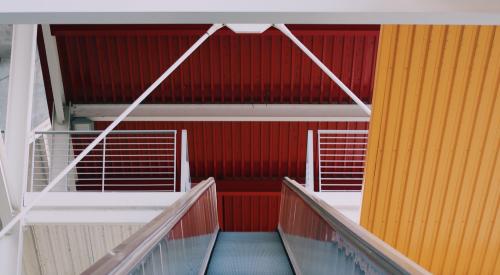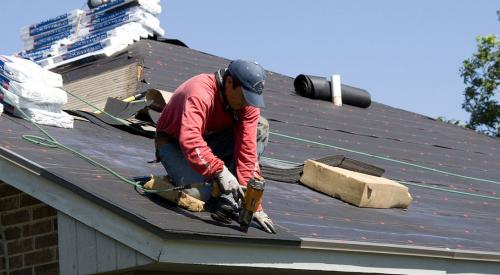Green homes in Texas add $25,000 to resale value
New homes in Texas built to meet green building standards like LEED are worth an average of $25,000 more in resale value than conventional homes, according to a new study from The University of Texas at Austin and the U.S. Green Building Council.
The study, “The Value of LEED Homes in the Texas Real Estate Market: A Statistical Analysis of Resale Premiums for Green Certification,” found that homes built to LEED standards between 2008-2016 showed an 8% increase in value, while homes built to other green standards saw a 6% increase in value. “Homes that are built to meet green standards deliver more value to the seller and also ensure that buyers will have a high-value sale down the road and reap the benefit of lower utility bills while living in the home,” said Taryn Holowka, senior vice president, USGBC.
DOE will spend $3.7 million to validate new energy efficiency solutions for homes
The U.S. Department of Energy will spend up to $3.7 million to study and validate new energy efficiency solutions for homes. The projects will accelerate energy performance improvements in existing and new residential buildings using an integrated building systems approach to achieve peak energy performance, DOE said in a press release. This work will contribute to achieving the Residential Building Integration program’s goals of reducing energy use intensity of new homes by at least 60% and existing homes by at least 40%, from the 2010 average for homes in each major U.S. climate.
Zoning that restricts housing construction also dampens other economic development
Zoning restrictions are making the construction of housing more difficult, and that is driving up the cost of housing in many cities. What’s more, that effect is having an impact beyond the construction industry, according to a study by two economists, Chang-Tai Hsieh of the University of Chicago and Enrico Moretti of the University of California at Berkeley. They estimate that zoning restrictions reduced U.S. GDP as a whole by 9% percent a year, or roughly $1.5 trillion a year.
Some urbanists and city planners view the key to rebuilding cities, reigniting innovation, and improving productivity is to do away with onerous zoning codes and land-use restrictions that stymie much-needed development. This is particularly true when it comes to housing in certain technology and economic hubs such as like New York and San Francisco.
The two economists recently published an update to their study, and found that such zoning constraints lowered the aggregate growth by more than half between 1964 and 2009. The study advocates for investing in mass transit, light rail, subways and high-speed rail to connect places together. Such investments in transit are likely to have a much bigger positive economic impact than eliminating land use restrictions by linking job centers to outlying places, where land is relatively cheap and housing more affordable, the economists argue.
OSHA to release web-based injury and illness reporting form on August 1
The Occupational Safety and Health Administration will release a web-based injury and illness reporting form on Aug. 1. Employers will be able to use the Injury Tracking Application to submit information from their completed 2016 OSHA Form 300As. This will be mandated by the agency's new electronic recordkeeping requirements later this year.
OSHA recently pushed back implementation of the new provision from July 1 to Dec. 1. Employers will be able to use the application starting Aug. 1, giving them time to incorporate it into their practices before the new requirement takes effect.
New ISO standard on video fire detectors will help identify fires more quickly
Newly released standard ISO/TS 7240-29 provides the first platform for international acceptance of a uniform specification for video fire detectors. Video detection technology detects, identifies, and analyzes smoke at the first sign of fire or flame. The equipment’s understanding of the behavior and movement of smoke enables users located on site or from a remote location to raise the alert and take appropriate action early.
“In large open compartments, it can remove the delay in smoke travelling to the detector and result in a quicker response by emergency services,” says Keith Shinn, Chair of ISO subcommittee ISO/TC 21/SC 3. “It can also permit smoke detection in harsh environments where it may otherwise be impractical.”
“Considering that many of the facilities where VFDs are to be installed are owned by international conglomerates, an internationally accepted specification is ideal,” says Isaac Papier, Convenor of ISO subcommittee ISO/TC 21/SC 3. “The new ISO/TS 7240-29 provides owners and insurance carriers with the international consensus metrics for performance of VFDs.”
New homes in South Miami will be required to install solar panels
Any new home built in South Miami, Fla., will have to install solar panels under a new ordinance. The first law of its kind in Florida goes into effect Sept. 18, 2017. New residential construction must have 175 sf of solar panel installed per 1,000 sf of sunlit roof area, or 2.75 kw per 1,000 sf of living space, whichever is less. If the house is built under existing trees, it may be exempt from the rule. Home renovations that replace more than 75% of the structure or extend the structure by more than 75% would also be subject to the new ordinance.
Five fire scenarios tested on full-scale mass timber building
Five full-scale mass timber fire tests in a multi-story apartment building with promising results will be used to inform code changes. The International Code Council Ad-hoc Committee on Tall Wood Buildings conducted the fire scenarios tested in two one-bedroom apartments constructed using mass timber. The test scenarios included various arrangements of exposed and unexposed cross-laminated timber (CLT) with open doors between living and sleeping areas.
In addition, the tests evaluated automatic sprinkler systems effectiveness. A General Technical Report FPL-GTR-247 on the fire tests will be available from the Forest Products Laboratory in the near future.
One finding after one test was that exposed CLT essentially self-extinguished due to the formation of char that protected the underlying wood. In two tests, sprinklers were able to effectively control the fire.
Florida Home Builders Assn. sponsors new Certified Ratings Program
The Florida Home Builders Association launched a sponsorship of a new Certified Ratings Program that combines energy and water ratings into a single package for home builders. Triconic will administer the program with input from Intertek and UL. The program could rival the popularity of RESNET. Data for each certification is submitted to Triconic through their online portal, and the data is reviewed by Intertek and UL. The program uses the same building energy measurement standard as RESNET’s HERS (ANSI/RESNET/ICC 301-2014).
Peer pressure a key to spread of residential rooftop solar
One of the best predictors of whether people install solar panels on their house is whether their neighbors have already done so. Google's new “Project Sunroof” shows homeowners which of their neighbors have already put solar panels on their roofs. The free online tool also informs users on how much sun hits their roof and how much solar panels would save them per month.
Less mobility may be hampering housing market
Twenty-five years ago, Americans were more than twice as likely to move from one state to another, and that may be a dampening factor on the housing market. With interest rates near historic lows and consumer confidence high, housing experts would expect the market to be hotter. But today, people don't have to move as much to find a good job that matches their skills as may have been the case a quarter-century ago. So, there is less need for people to sell their current home and buy a new one.













